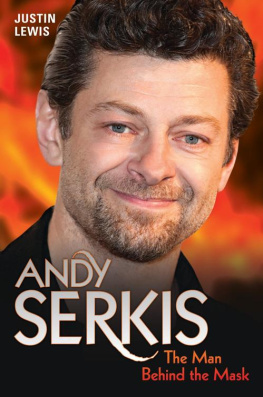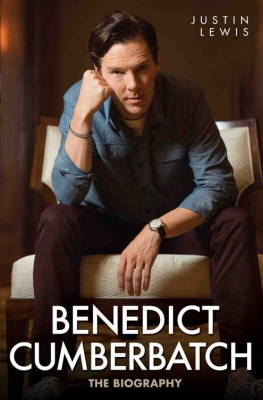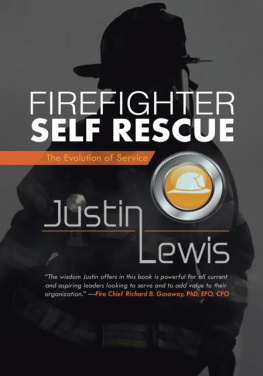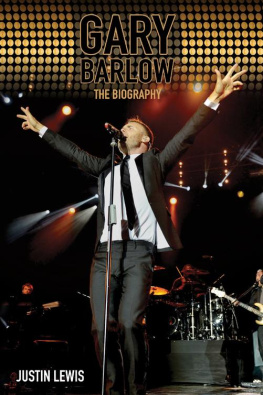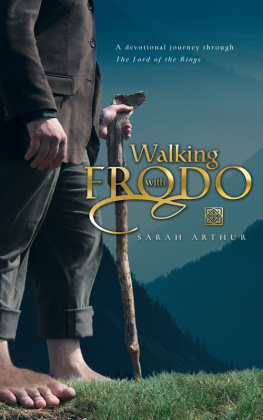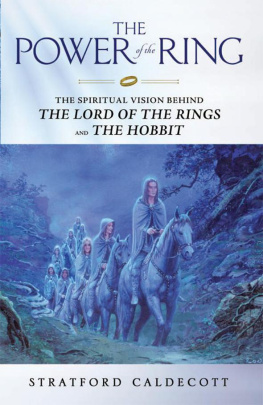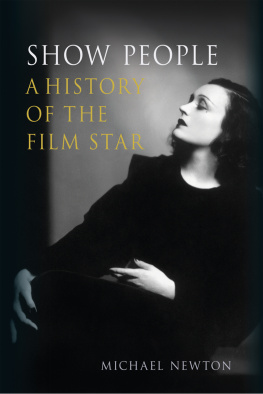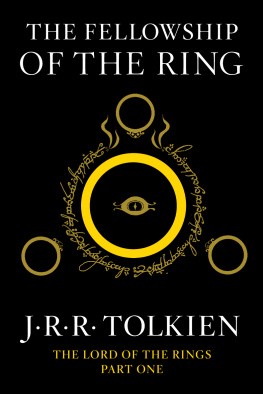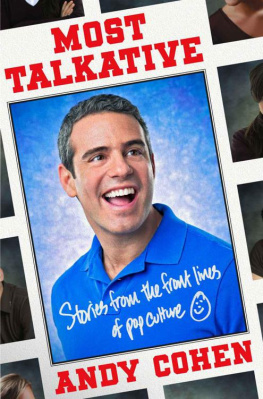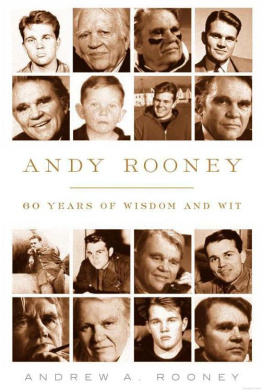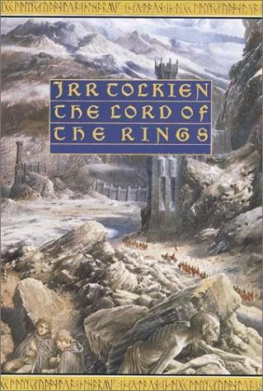W hen The Two Towers, the second film in Peter Jacksons lavish epic screen trilogy of J. R. R. Tolkiens The Lord of the Rings, became a worldwide box-office sensation at Christmas 2002, the big mystery surrounded the grotesque, crawling and emaciated figure of Gollum. Because he had been developed via computer-generated imagery (CGI), it was assumed that the man who was playing the role of Gollum had merely donated a voice for him, as someone might do for any kind of animated character. In fact, Andy Serkis had played every aspect of Gollum physical, emotional and psychological and his physical movements and facial expressions were converted digitally into a specially created version of the character. But just who was the man behind the mask of Gollum? Who was Andy Serkis?
Perhaps one of the many reasons why Serkiss Gollum made such an impression was that the actor was not a star name, and so few who saw the films had any preconceptions about him. He had been a versatile professional actor since 1985, constantly in demand with stage roles all over Britain. His virtuosic level of physical acting had made some theatre critics single him out of a cast by name, but, despite landing roles on TV and in films, it took the Tolkien trilogy to bring his name to millions.
The Lord of the Rings made Andy Serkis an internationally renowned actor, and he has remained loyal to Peter Jacksons film work, having collaborated with him again on King Kong and, more recently, once more as Gollum in the forthcoming multi-instalment adaptation of Tolkiens The Hobbit. Meanwhile, his work with CGI has also been seen in Rise of the Planet of the Apes and The Adventures of Tintin:The Secret of the Unicorn. But elsewhere he has continued to wear a variety of masks for other characters, too, both real and fictional figures, from Albert Einstein to Bill Sikes, culminating in his award-winning and high-profile interpretation of Ian Dury in Sex & Drugs & Rock & Roll.
What Serkis brings to each and every part is a commitment, a determination to research the heart, soul and mind of whichever part he has been assigned and then reporting back his findings to the audience. He also displays a generosity to his fellow actors and collaborators. He regards acting as sharing the limelight with the audience rather than monopolising his performance space.
In this book, we will follow Andy Serkis through his life and career to date. We will discover how his ambition to be an artist as a youth was overtaken by a raging passion for the stage. We will separately investigate his work for theatre and television, two strands that would intertwine from 1989 onwards, and then introduce a third strand: his first few years in film. Over three chapters, we will dive into Middle-earth and discover how he tied together all of this experience when helping Peter Jackson reinvent Gollum for the screen, before doing the same as Kong in 20045. Next, we will explore his thoughts and feelings about portraying villainy and evil on stage and screen, and discover that his highly praised screen performance as Ian Dury was by no means the only time he played a figure who had actually lived. And, finally, we will find out more about his accomplishments as a director, and examine some of his current and future projects. Along the way, well also glimpse into his home life with his family and the woman who has been his partner and wife for more than 20 years: fellow actor Lorraine Ashbourne.
No matter who he portrays ape, pop icon, killer or Gollum theres always a little bit of Andy Serkis behind the masks of the wide range of figures he has played. You can always see yourself, he told the Guardian in November 2010. People tell me they can see elements of my personality. Its subtle timing, eye movement and gestures but its there if you look closely.
L ong regarded as reliable, resourceful and adventurous, Andy Serkis has always been interested in the power of stage and screen acting as a transformative experience, seeing how drama can transcend entertainment and actually change peoples lives. He has often spoken about acting being a service to the community and a responsibility, which may explain why stardom has albeit belatedly found him. As we will see, at no point in his career has he consciously pursued celebrity. Working for others is something my parents instilled in us, Andy said in 2010. There was a strong sense of the importance of helping other people. And Clement and Lylie Serkiss separate but tireless career paths had set a clear example of service and responsibility to their three daughters and two younger sons.
English-born Lylie taught children with special needs, but continued to raise all five of her offspring almost single-handedly. Clement, whose surname had been shortened from Serkissian, was of Armenian descent and worked as a doctor in Iraq throughout the time that Andy and his siblings were growing up. Clement had already qualified as a gynaecologist when he first met his future wife; she was recovering in Baghdad after contracting tuberculosis back in England. Following the couples marriage, Clement continued to live and work in Iraq, while Lylie and their children would relocate to Ruislip Manor in Middlesex, 13 miles northwest of central London.
Clement and Lylies fourth child, Andrew, was born on 20 April 1964. In that same year, Clement was one of four medics who co-founded a private hospital in Baghdad called Ibn Sina. The founders had expressed grave concern that the city, despite its size and population, had no hospital with sufficiently modern equipment and facilities. Although it had been founded for the benefit of the ruling class, Clement and his three co-founders fervently believed that Ibn Sina should provide free treatment for anyone in need, regardless of their race, religion or social status.
Until the mid-1970s, the Serkis children would see their father only during school holidays. They would travel to the Iraqi capital of Baghdad, where they would be reunited with him and other relatives. Clements absence from home life in Ruislip could make Andy a tense youngster.
The boys unruly nature would mellow with maturity, but would be accompanied by a resigned sense of sadness about his absentee father. I always mourn the fact I never got to know my father, or spent time with him, he told TheTimes in 2009, as Clement was entering his 90th year. To relate to him now was unfathomable. Its like, Where do you begin? So much has gone on. So much. Yet this regret was tempered by an admiration for his fathers belief in justice, supporting those people who needed it. Times werent easy for him in Baghdad, Andy told the Guardian, but he carried on going there because he believed in what he was doing.
The childhood trips to the Middle East were certainly enlightening, and would help to give Andy and his siblings a sense of acceptance and flexibility about different countries and cultures that were very different from west London. These journeys, coupled with being brought up by his mother alone, also made Andy start to relate to the idea of being an outsider in society, something that he would explore a great deal in many of his stage and screen roles, from Gollum to Ian Brady. We were outsiders, he said, and Ive always sympathised with those who feel excluded, probably as a result of this.
From the age of 11, Andy attended St Benedicts, a Roman Catholic school in the west London district of Ealing. The schools other former pupils have included the biographer and critic Peter Ackroyd, the former Conservative MP and Hong Kong governor Chris (later Lord) Patten, who was appointed chairman of the BBC Trust in 2011, and the comedian Julian Clary. Clary was already entering St Benedicts sixth form when Serkis enrolled at the school in the autumn of 1975. Although it was strictly a boys-only school at that point, some girls were admitted to its sixth form by the end of the 1970s. Serkis remembers lots of gangs and lots of fights, but was not on the receiving end of bullying. He did, however, gain a nickname: perhaps inevitably, Billy Smarts, after the famous Billy Smarts Circus, whose spectacular shows were a mainstay of festive television at the time.

